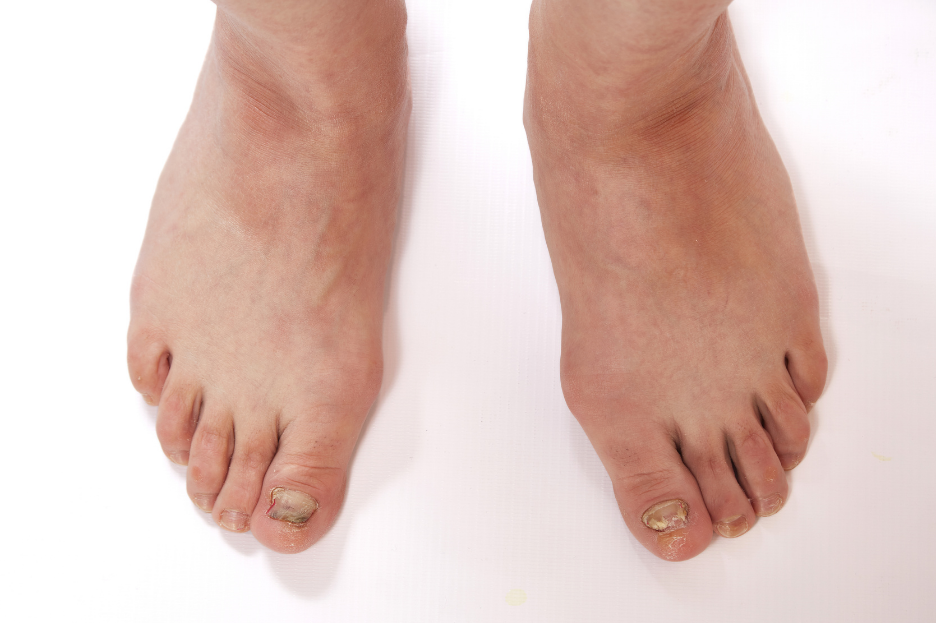How To Spot A Fungal Nail Infection – And Treat It, Fast

For a long time, fungal nail infections were the enemy of the podiatrist due to their difficult-to-treat nature. Topical antifungals such as lacquers and creams showed low efficacy rates in the studies. Oral medications carried a risk of side effects, making them unsuitable for some people. Very thankfully, advances in medicine and technology have now made treating fungal nails easier than ever – but how do you know if you have a fungal nail infection?
Today our podiatrists have shared what you should be looking out for to spot a fungal nail infection, and how you can get rid of your fungal nail infection with a simple and effective treatment called Clearanail.
1. Spots Or Streaks
Very early on in a fungal nail infection, the first sign you typically notice are spots or streaks in the nail. Any portion of the nail can be affected, though it often starts at the ends of the nails or down the sides. Many people notice these changes, but hope they will pass naturally, so delay seeking treatment.
2. Nail Thickening
As the fungus infects the area beneath the nail plate, thick nodules are produced, and the nail thickening process begins. Over time, this can cause pain when wearing shoes because of the added pressure on the nail, and it may become difficult or even painful to trim the toenails.
3. Crumbly, Moth-Eaten Appearance
Alongside the thickening, with the build-up of soft keratin between the nail and the nail bed beneath which can turn crumbly, ‘islands’ on top of the nails can form, and the nails can develop a general ‘moth-eaten’ appearance. This will leave them crumbling and can leave jagged edges through the nail which are often frustrating when they catch on socks.
4. Discolouration
Fungal nails often turn yellow or white, but can also turn brown, black or green. These changes often start in one spot or in patches, and can progressively worsen until it covers the entire nail.
5. Nail ‘Cave’
As the nail undergoes these changes and thickening, the nail shape can become distorted and may disconnect from the nail bed beneath (in the pink area of the nail. This can leave a small opening between the nail and the nail bed, which we’re referring to as the ‘cave’. Both nail debris and other matter can get trapped here, and the nail may become odorous.
Treating Fungal Nail Infections With Clearanail
Clearanail is a unique and innovative system that uses a micro-drill to create incredibly small holes (approximately 0.4mm diameter) in the nail plate. This solves an age-old problem: how to get past the nail’s natural defence mechanisms that stops anything (including anti-fungal creams!) from penetrating the toenail. This means that we can actually reach the fungus where it lives within and beneath the toenail, to effectively treat it.
The Clearanail process is completely pain-free, as the system never drills deeper than the nail itself due to its innovative system. In our years of using this system, we’ve never had any patient feel any pain. Once the holes are created, a highly effective and proven antifungal is applied to penetrate the nail, working quickly to destroy the fungus.
The Clearanail process is done as a single visit, with no repeated treatments required unless there is a re-infection – though we provide plenty of information and advice on preventing reinfection and helping stop the spread in your household.
Ready For Healthy, Clear Nails?
Our experienced podiatry team is here to help. We’ll start by confirming your fungal nail diagnosis and going through every step of the treatment and what you can expect, alongside alternative solutions too. Then we can get started on your Clearanail treatment and your journey to clear and healthy nails.
To make a booking, please give us a call on (03) 972 2927.
